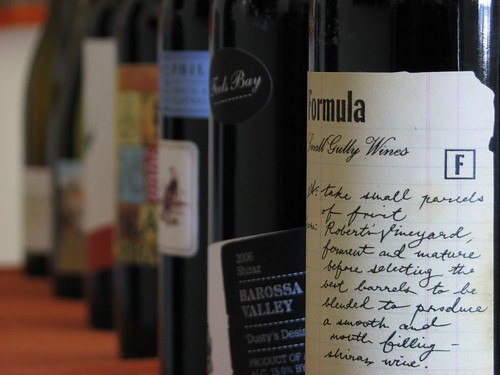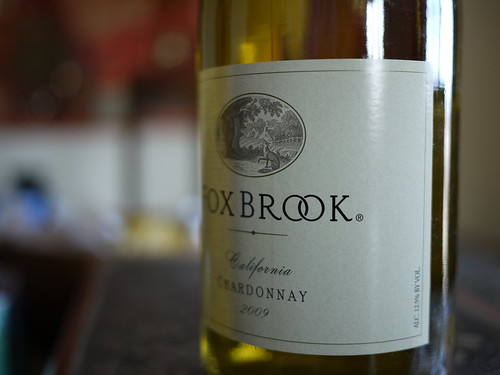You might remember my previous experiments with depth of field – well, with my new camera (and new lenses), I decided to re-run those experiments.
As a refresher, this is the result of my first experiment with trying to control depth of field:
This was taken with my old Canon PowerShot S3 IS camera, with an aperture of f/3.5, an exposure of 1/8th of a second, and a focal length of 25.2mm (equivalent to 159mm in traditional 35mm terms).
In other words, to get this effect, I had to zoom in a bit and set the focus as close as I could to the front bottle of wine. Even so, the bottles in the back, although blurred, were still identifiable. My old camera (like most point & shoot or non-interchangeable lens cameras) was just not capable of creating very shallow depth of field (at least, outside of super-macro mode when focusing on something only an inch away from the lens).
When I got my new camera, one of the first things I did was re-run this experiment.
This was the best I could do with the stock (kit) lens that came with my new camera. This was taken with my Panasonic Lumix DMC-G2 camera, using a 14-42mm (28-84mm in 35mm terms) f/3.5-5.6 zoom lens. The aperture was f/3.5 (as in my previous experiment) and the exposure was 1/13th of a second, with a focal length of 42mm (84mm equivalent).
As you can see, the results were pretty much the same as in my original experiment, with perhaps a little bit more background blur, due largely to the fact that my new camera has a larger sensor (and thus, as I’ve mentioned before, the same f-stop number actually means a slightly larger physical aperture).
More recently, however, I got a new, faster lens (that is, one with a larger aperture – meaning, a smaller maximum f-stop number). Specifically, I got a 20mm (40mm equiv.) f/1.7 lens.
Naturally, almost as soon as I got it, I tried re-running my experiment again. (I was in a bit of a hurry though, so I didn’t pull out all my wine bottles; instead I opted for just one.) This was the result:
The larger aperture (smaller f-number) of this new lens gives a very, very shallow depth of field, allowing me to completely blur out the background.
This picture was taken at the same place as all the others, but now the background (in particular, the orange & red wall hanging) is much, much more blurred out – almost to the point where you can’t make out what it is.
This last picture’s technical details are: 20mm (40mm equiv.), f/1.7, and 1/50th of a second exposure.
As you can see, with the much larger aperture, I was finally able to achieve that shallow depth of field I’d always wanted.
Even though this new lens has a fixed focal length (a.k.a. it’s a “prime” lens, meaning it can’t zoom at all), it is now my go-to lens, especially for indoors photos. That’s because, in addition to the nice shallow depth of field, the larger aperture also means it lets in more light, which lets me take photos in low light (e.g., indoors) at a faster shutter speed (and also, lower ISO setting) than my other lens or my old camera could.
In the end, all these experiments with depth of field and different lenses (and cameras!) have taught me a lot, and helped me get a “gut feeling” understanding of depth of field and focus and how they relate to one another. (Time will tell whether this actually leads to taking better photos.)


